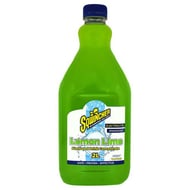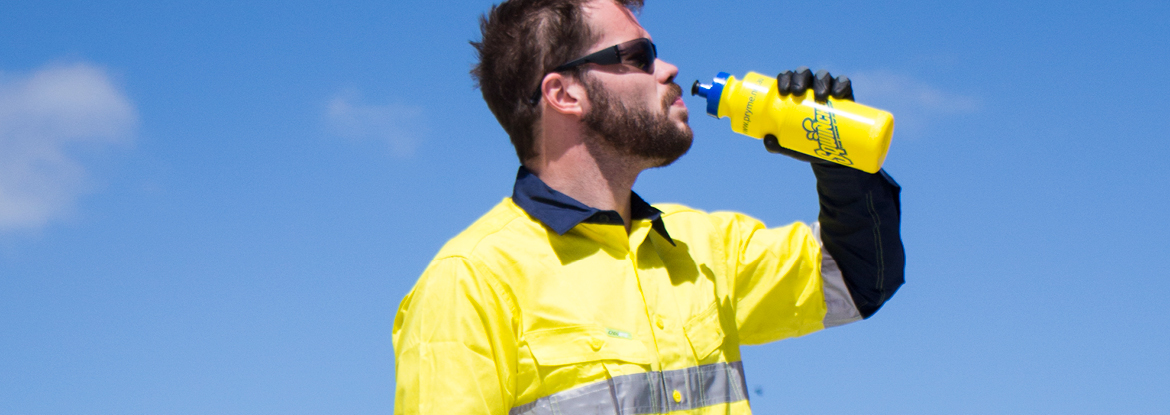Up to 60% of the human body is water, with the brain and heart composed of 73% and the lungs 83%. The human body needs water to function as water allows the body to regulate temperature, protect tissue and joints, remove waste, aid in digestion and nourish the brain. This is why it's imperative for people to maintain their water intake as it ensures physical well-being and survival.
Water is naturally excreted from the body every day through urination, sweating and breathing. During the day, these natural functions can cause a fluid imbalance, which is often further amplified when an individual is in warmer weather, humid conditions or participating in physical activity. To rehydrate the body and restore fluid levels, the individual must replace the fluids they've lost.
However, if the individual is unable to effectively restore fluid levels dehydration can occur. Dehydration can cause a major strain on an individual's body and impair functionality.
What is Dehydration?
Dehydration occurs when there is an inadequate level of water and electrolytes in the body. This generally occurs when the human body loses more fluid than it consumes, typically after excessive physical exercise or being in the heat for long periods of time.
What are Electrolytes?
While water is necessary to hydrate the body, water alone will not replace lost nutrients and minerals such as electrolytes. Electrolytes are electrically charged minerals that regulate the flow and balance of water between cells to hydrate the body in a process called osmosis. They're found in your blood, sweat and urine and include:
Sodium |
|
Calcium |
Magnesium |
Electrolytes are found in all kinds of foods, including bananas, broccoli and avocados and drinks, including 100% fruit juice, coconut water and sports drinks. Electrolytes, like water, are lost through sweat and bodily functions which is why it's important to fully replenish them when participating in physical work. If electrolytes aren't replenished, this can lead to an electrolyte imbalance and if the imbalance isn't treated immediately, it could cause the worker to experience a fast/irregular heartbeat, numbness and tingling, confusion, muscle weakness and cramps, headaches, seizures and convulsions, fatigue or nausea and constipation.
Sqwincher® provides a wide range of electrolyte-enhanced packages, designed for the industrial workplace. These include zero sugar, caffeine and gluten-free portion control packs to help keep workers safe from heat stress-related accidents or illnesses. With Sqwincher® hydration powders, sachets, concentrates and ice pops available in various flavours, there is a product suitable for any condition and worker.
Disclaimer: Sqwincher® products should not be taken as a substitute for water.
 |
 |
 |
 |
Browse Sqwincher Hydration Range
What Causes Dehydration?
Dehydration can sometimes occur due to the simplest of reasons; being too busy, drinking too many highly caffeinated drinks or having limited access to safe drinking water (e.g. camping or boating). However, three of the most common causes of dehydration are:
- Illness - diarrhoea, vomiting, and fever.
- Excessive sweating due to vigorous exercise or working in high-temperature areas.
- Increased urination - this could be the result of high alcohol consumption or undiagnosed/uncontrolled diabetes. People with diabetes have more glucose in their bloodstream, causing the kidneys to excrete more urine to get rid of the glucose.
What are the Signs of Dehydration?
Dehydration can vary from mild to severe depending on the climate and physical activity.
| Signs | Mild Dehydration | Moderate Dehydration | Severe Dehydration |
| Weight Loss | <5% | 6-9% | >10% |
| Behaviour | Normal, Alert | Restless, Irritable | Lethargic or Unconscious |
| Thirst | Slight | Moderate |
Intense |
| Mouth & Tongue | Normal | Dry | Dry |
| Eyes | Normal | Sunken | Sunken |
| Blood Pressure | Normal | Normal | Slightly Decreased |
| Heart Rate | Normal | Increased | Increased |
| Urine Output | Normal or Slightly Reduced | Reduced | Absent |
| Urine Colour | Yellow Tinge | Hazy Yellow | Deep Yellow |
| Breathing | Normal | Deep, Increased Breath Rate | Deep, Increased Breath Rate |
| Skin Pinch | Normal | Decreased | Decreased |
How to Prevent Dehydration in Australia
The Australian climate is hot, dry and humid, especially in the months of December, January and February (summer). This climate exposes the body to extreme conditions that can pose a major health risk to workers. If a worker becomes dehydrated, their body functionality begins to weaken with reduced physical ability and cognitive thinking, which can lead to a productivity decrease, injury or even fatality. Below are 5 simple steps you can follow to prevent dehydration.
DRINK fluids regularly (250mL every 15-20mins) |
AVOID or limit caffeinated and high sugar energy drinks |
SEEK shade to reduce excessive sun exposure |
APPLY SPF 30+ or higher sunscreen and wear a hat |
WEAR thin, loose flowing clothing to generate airflow |
What are the Dangers of Dehydration?
If you or a worker is showing any signs of dehydration, immediately take action and begin replenishing fluids. If signs are ignored, serious health issues may follow. For example:
- Joint pain. In the joints, the fluid acts as a lubricant for easy movement. When an individual is dehydrated, there is less lubrication causing the joints to dry up and friction to occur.
- Urinary and kidney problems. Prolonged or repeated stints of dehydration can cause a build-up of waste in the body that can cause urinary tract infections, kidney stones or even kidney failure.
- Seizures. When dehydration occurs, it causes an imbalance of electrolytes in the body (electrolytes are what help carry electrical signals from one cell to another). If an imbalance occurs the signals can become mixed leading to involuntary muscle contractions and, sometimes, a loss of consciousness.
- Low blood volume shock (hypovolemic shock). This is a life-threatening issue that occurs when low blood volume causes a drop in blood pressure and a drop in the amount of oxygen in your body.
- Heat cramps: dehydration makes it harder for the body to maintain its optimal temperature at 37.5° These are painful involuntary muscle spasms
- Heat exhaustion: This condition is more severe than heat cramps. The body sweats profusely and has a rapid pulse whilst having cool, moist skin with ‘goose bumps'. Other symptoms include dizziness and nausea
- Heatstroke: a life-threatening injury that happens when body temperature rises to 40°C or higher. Heatstroke is a medical emergency and if left untreated could damage the brain, heart, kidneys and muscles. Signs include high temperature, confusion, agitation, slurred speech, nausea, vomiting, problems concentrating and shallow breathing.
If you have any questions about hydration or require bulk buy pricing for Sqwincher products, reach out to the ATOM Safety team today.
